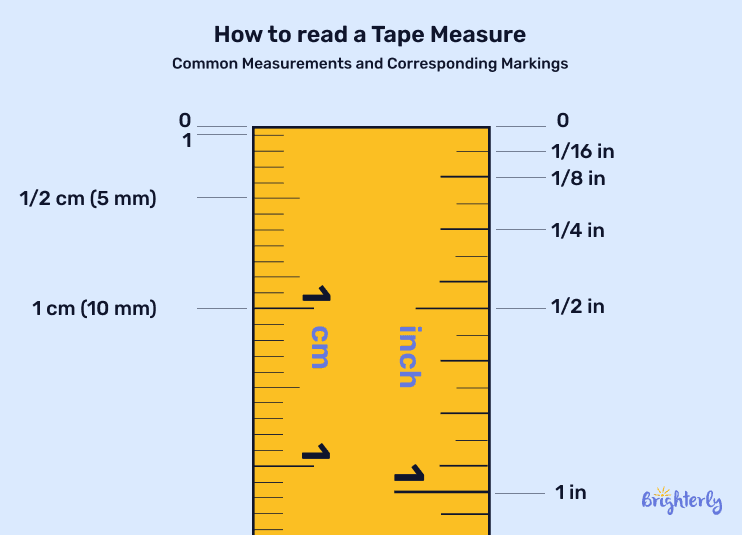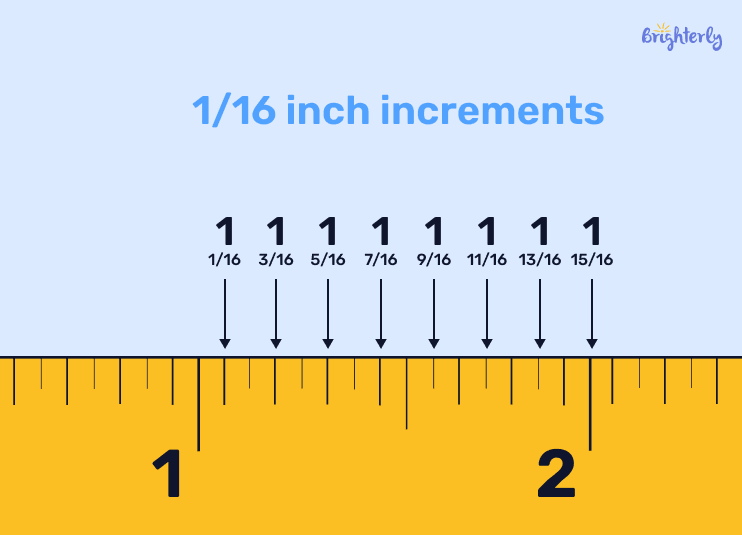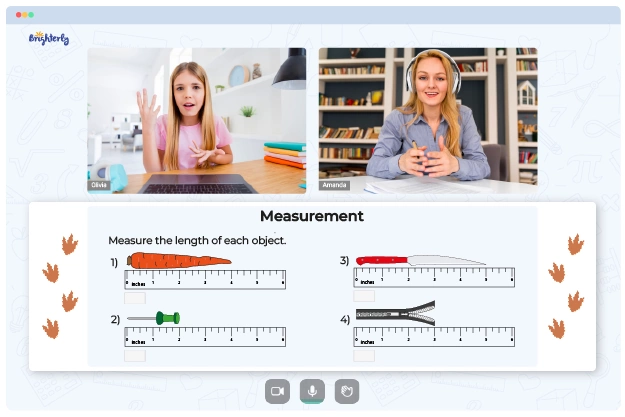Measuring Tape – Definition with Examples
Updated on December 1, 2025
In geometry, you’ll be required to master measuring all different types of shapes, objects, and lines. You’ll also measure items often in your everyday life.
One of the tools you’ll most commonly use for this is a measuring tape. That’s why learning all about the tape measure can help you improve your geometry skills.
Here, we’re going to cover the tape measure definition, how it works, and its advantages. We’ll also answer some commonly asked questions from parents and students about the tape measure.
What is a measuring tape?
A tape measure explained is a handheld device that you can use to measure objects, shapes, and distances. It can be made of a highly flexible material that folds easily, or of metal or fiberglass. The latter is usually contained in a casing and is retractable.
Measuring tapes can range from a few feet or meters to larger lengths, depending on your requirements. They usually contain multiple measurement units, like millimeters, centimeters, and meters. If you flip the tape around, you’ll get inches and feet. This is great for converting measurements!

How does a measuring tape work?
A measuring tape works by accurately measuring the distance between two points or the length of an object. To use a measuring tape, you should:
- Find the measurements you want to use and place the end of the tool, which may be marked 0, on your starting point
- Stretch your measuring tape along to your finishing point — with flexible measuring tape, you need to ensure you keep this flat
- Note the number at the end point of your object for measuring tape reading — that is the length, width, or height you’ve measured
Measuring tape examples
Now that we’ve explained the tape measure description, let’s move on to examples of using it in real life:
- Measuring a room: you might have seen your parents use a measuring tape to measure a room. This could be to measure it for wallpaper or furniture!
- Tailoring clothes: sometimes, off-the-shelf clothes don’t fit quite right, so tailors use flexible measuring tapes to measure and alter clothing items
- DIY projects: if you have a keen interest in DIY, you’ll use a measuring tape to measure many items you work with, like boards and shelves
Advantages of measuring tape
There are lots of advantages that come with using a measuring tape over another tool like a ruler:
- Easy to carry: Measuring tapes are more compact than rulers, making them much easier to carry around and transport
- Flexible: Measuring tapes, especially the flexible variety, are malleable, which can make them easier to work with
- Accurate: Measuring tapes contain precise measurements, as well as multiple units, making them accurate and easy to convert with

Choosing the right tape measure
There are different measuring tapes you can choose from, varying in size, shape, material, and flexibility. Now that you know the measuring tape definition, here are the factors you need to consider when choosing the right tape measure:
- Size and length: Depending on the rough size of the item or the distance you’re measuring, you might need a long measuring tape. Smaller distances don’t require very long tape measures
- Flexibility: If the thing you’re measuring has curves or goes around corners, you need to consider a flexible tape measure
- Additional features like hooks: If you’re measuring a longer distance, like a wall, a retractable measuring tape with a hook on the end is the best option, so you don’t need to hold the end down
How to read a measuring tape: Safety tips
Measuring tapes, particularly metal retractable versions, can cause you harm if you don’t use them safely. Here are some important safety tips to ensure you’re reading a measuring tape safely:
- Take care with sharp edges: Measuring tapes, especially those made of metal, can have sharp edges, so don’t run your finger across them or catch them on exposed skin
- Engage the hook: When using a retractable measuring tape, make sure your hook is engaged (i.e., hooked onto something), so that it won’t suddenly snap back and hurt you
- Retract your tape slowly: When you’re finished measuring, particularly over a longer distance, walk slowly back to your hook to prevent snapping your tape back
Enhancing math skills with measuring tape
There are lots of ways you can enhance your math skills with a measuring tape! Here are just a few:
- Measure objects around you to practice reading a tape and understanding measurement units
- Convert your units using your measuring tape to familiarize yourself with different units of measurement
- Use a measuring tape to measure shapes in math class — a flexible tape is best!
Conclusion
Now you know the tape measure purpose and exactly how to choose and use a measuring tape! Learning about this tool is important because it’s a staple of math and real-life projects. With it, you’ll be able to measure many different distances and objects, and, importantly, you’ll be able to do it safely!
Frequently asked questions on measuring tape
What is a tape measure?
A tape measure is a device that helps you measure distances. It can come in a flexible form or as a retractable metal or fiberglass item held in a case. It often contains multiple units of measurement, including millimeters, centimeters, inches, and feet. That’s the measuring tape definition and uses.
How long is a measuring tape?
There is no one set length of a measuring tape. However, most everyday models will be somewhere between 3 meters and 10 meters long, or approximately 33 feet.
What is a tape measure used for?
Measuring tape uses include measuring objects and distances. Objects can include window frames, DIY items like shelves, and the height of a table. Distances can include the length of your wall for wallpaper or furniture arranging.
Can I use a measuring tape to measure curved objects?
Yes, you can use a measuring tape to measure curved objects. It’s best to use a flexible measuring tape rather than a retractable tape measure, because they’re made of softer material that curves more easily.
Can children use a measuring tape safely?
Yes, children can use a measuring tape safely. However, you should show them how to use the hook, not touch the sharp edges, and retract slowly. Supervise them as they begin using the tapes independently to ensure they’re doing so safely.






